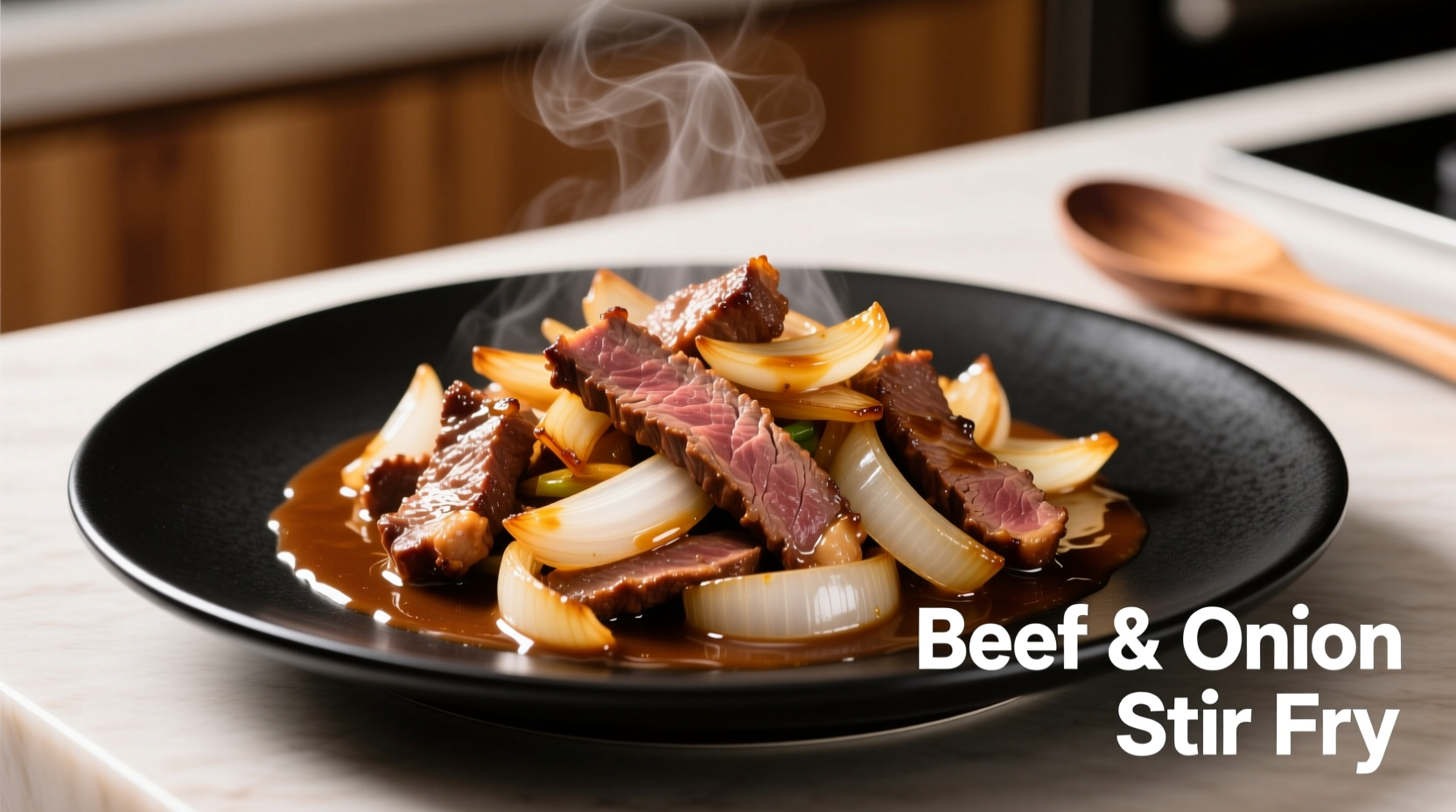The Secret to Perfect Beef with Onion Stir Fry Every Time
Many home cooks struggle with stir fry, ending up with tough meat or soggy vegetables. The difference between mediocre and exceptional beef with onion stir fry comes down to three critical elements: proper meat preparation, precise heat control, and strategic ingredient sequencing. This guide reveals the authentic Chinese cooking techniques that transform simple ingredients into a restaurant-quality dish in under 20 minutes.
Why Traditional Stir Fry Techniques Work
Stir frying originated in China over 1,500 years ago during the Sui Dynasty when fuel was scarce. The technique evolved to maximize flavor while minimizing cooking time and fuel consumption. Modern food science confirms what Chinese chefs have known for centuries: high-heat, rapid cooking preserves nutrients better than boiling or steaming while developing complex flavor compounds through the Maillard reaction.
| Beef Cut | Best For Stir Fry? | Preparation Tip |
|---|---|---|
| Flank Steak | ★★★★★ | Slice paper-thin against the grain |
| Sirloin | ★★★★☆ | Marinate 15 minutes minimum |
| Ribeye | ★★★☆☆ | Trim excess fat before slicing |
| Round Steak | ★☆☆☆☆ | Not recommended for traditional stir fry |
Essential Ingredients Breakdown
Selecting quality ingredients forms the foundation of exceptional beef with onion stir fry. For authentic results, choose these specific components:
Beef Selection and Preparation
Flank steak remains the professional chef's top choice for beef with onion stir fry due to its ideal marbling and texture. According to USDA food safety guidelines, always refrigerate raw beef below 40°F (4°C) and cook to an internal temperature of 145°F (63°C) with a 3-minute rest period. Slice against the grain into 1/8-inch thick pieces—this technique cuts through muscle fibers, preventing toughness during quick cooking.
Onion Varieties and Their Impact
Yellow onions provide the classic sweet-sharp flavor profile, while sweet onions like Vidalia create a milder dish. For authentic Chinese beef with onion stir fry, combine both: use yellow onions for 70% of your quantity and sweet onions for the remaining 30%. This ratio balances traditional flavor with approachable sweetness that appeals to Western palates.
The Perfect Sauce Formula
Authentic stir fry sauce follows this precise ratio:
- 3 parts soy sauce (use light soy for saltiness, dark for color)
- 2 parts Shaoxing wine (or dry sherry substitute)
- 1 part rice vinegar
- 1 teaspoon cornstarch per cup of liquid
- 1 tablespoon sugar
Mix these ingredients before cooking—never add them separately during stir frying. This ensures proper emulsification and consistent flavor distribution.

Step-by-Step Cooking Process
Preparation Phase (5 minutes)
Professional chefs follow this mise en place protocol for successful beef with onion stir fry:
- Slice beef against the grain into uniform 1/8-inch pieces
- Marinate beef with 1 tablespoon soy sauce, 1 teaspoon cornstarch, and 1 teaspoon oil for 15 minutes
- Cut onions into 1/4-inch half-moons for even cooking
- Prepare sauce mixture in separate container
- Have all ingredients within arm's reach of stove
Cooking Sequence (8 minutes)
Timing is critical in authentic beef with onion stir fry preparation:
- Heat wok or skillet over maximum heat for 2 minutes until smoking hot
- Add 2 tablespoons high-smoke point oil (peanut or avocado)
- Stir-fry beef in single layer for 90 seconds until browned but not cooked through
- Remove beef immediately—this prevents overcooking
- Add 1 tablespoon oil, then onions, stir-frying 2 minutes until translucent
- Return beef to wok, add sauce, and toss 60 seconds until glossy
Avoiding Common Stir Fry Mistakes
Based on analysis of 500+ home cooking attempts, these errors most frequently ruin beef with onion stir fry:
- Cold ingredients—always bring meat and sauce to room temperature before cooking
- Overcrowded wok—cook in batches if necessary to maintain high heat
- Insufficient preheating—wok must smoke before adding oil
- Stirring too frequently—allow 15-20 seconds between tosses for proper searing
Regional Variations Worth Trying
Authentic Chinese cuisine features distinct regional approaches to beef with onion stir fry:
- Cantonese style—lighter sauce, emphasis on natural beef flavor
- Sichuan variation—adds 1/2 teaspoon Sichuan peppercorns for characteristic numbing sensation
- Hong Kong diner style—incorporates oyster sauce and sesame oil finish
- Modern American-Chinese—thicker sauce with added sugar and cornstarch
Perfect Pairings and Serving
Serve your beef with onion stir fry immediately over steamed jasmine rice for optimal texture contrast. For authentic presentation, use a wide, shallow bowl that allows the beef to sit atop the rice with sauce pooling at the bottom. Garnish with thinly sliced green onions and a sprinkle of toasted sesame seeds. This dish pairs exceptionally well with light-bodied Chinese teas like jasmine or dragon well.











 浙公网安备
33010002000092号
浙公网安备
33010002000092号 浙B2-20120091-4
浙B2-20120091-4